#Sarkar (2005)
Explore tagged Tumblr posts
Text
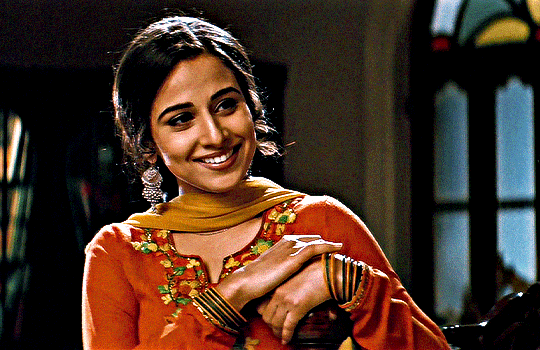

VIDYA BALAN as Lalita in PARINEETA परिणीता (2005) dir. Pradeep Sarkar
#parineeta#vidya balan#chewieblog#dailyflicks#userfilm#filmgifs#fyeahmovies#dailyworldcinema#bollywoodedit#smudgedhenna#00sedit#romancegifs#femalegifsource#userreds#cinematv#cinemapix#filmtvcentral#tvfilmsource#desi#esagifs
160 notes
·
View notes
Photo
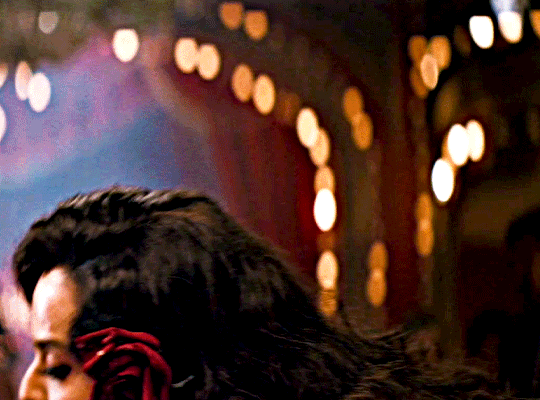

REKHA in Parineeta (2005) dir. Pradeep Sarkar
#parineeta#rekha#userfilm#asiandramasource#dailybollywoodqueens#dailyworldcinema#filmgifs#fyeahmovies#userreds#femalegifsource#00sedit#romancegifs#dancecinemablog#dailywoc#cinematv#cinemapix#filmtvcentral#tvfilmsource#*#by sj
346 notes
·
View notes
Text
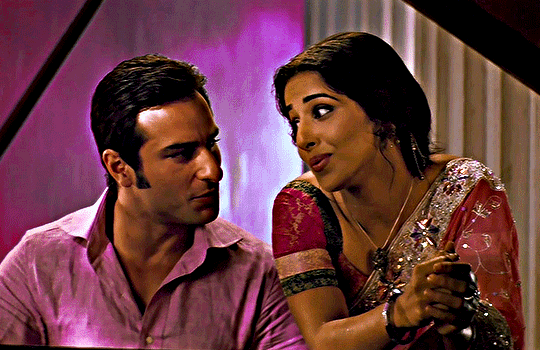
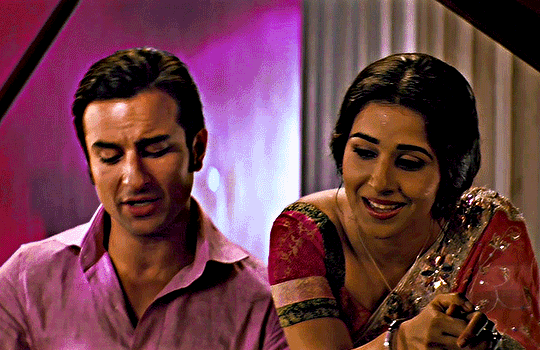
PARINEETA परिणीता (2005)
dir. Pradeep Sarkar
#parineeta#saif ali khan#vidya balan#shekhar x lalita#chewieblog#userfilm#filmgifs#fyeahmovies#dailyworldcinema#asiandramasource#bollywoodedit#otpsource#romancegifs#userpinked#cinematv#cinemapix#00sedit#ours#hindi#by sj
138 notes
·
View notes
Text





Ram Gopal Varma (Shiva (1990) / Satya (1998) / Company (2002) / Sarkar (2005) + The book "Des Balles sur Bombay") | Full boxset design by Gokaiju for the french Release by Spectrum Films
#ram gopal varma#rgv#gokaiju#grégory sacré#cover art#blu ray#blu ray cover#physical media#spectrum films
2 notes
·
View notes
Text
"Association between IPV and unintended pregnancy also suggested serious social consequences spawned by a cycle of unintended child-bearing in abusive households (Pallitto et al. 2005).”
Women in IPV situations live in a state of fear with a lack of control over their lives. This leads to a lack of control over their bodies- and their fertility. IPV often involves control over women’s reproductive decisions.

“In Boston, women reported that... their partners used tactics to get them pregnant or forced them to undergo abortion and sterilisation”

“In Seattle, women reporting IPV during pregnancy were significantly more likely to have low birth weight (LBW) infants, very LBW infants, pre-term births, very pre-term births and neonatal death.”

This is consistent with the authors' findings that IPV has significant negative effects on pregnant women. The findings in Seattle are a concrete example of the broader patterns observed in the literature review, which shows that violence during pregnancy is a substantial risk factor for poor birth outcomes. Violence also affects postpartum health, including breastfeeding, suggesting that the impacts of IPV on maternal and infant health extend beyond the immediate pregnancy period.
Sarkar, N. N. 2008. “The Impact of Intimate Partner Violence on Women.” Journal of Obstetrics and Gynaecology 28(3):266-271.
0 notes
Text
Amaal Mallik’s Unforgettable Bollywood Hits
In a world where music serves as both a form of expression and a connection to the soul, Amaal Mallik has emerged as one of Bollywood’s most promising and impactful music composers. Born into a family with a rich musical legacy, Amaal has successfully carved his niche in the highly competitive Indian music industry. With his ability to blend soulful melodies with contemporary beats, Amaal has become a household name, captivating audiences across generations.
This article delves deep into the journey of Amaal Mallik — his roots, achievements, and the unique elements that make his music resonate so deeply with listeners.
A Musical Lineage Rooted in Tradition Amaal Mallik was born into a family synonymous with Indian music. As the son of music director Daboo Malik and grandson of the legendary Sardar Malik, Amaal was destined to pursue a career in music. He grew up in an environment that nurtured his talent, with melodies and rhythms being an integral part of his upbringing. However, it wasn’t just his family’s legacy that set him apart; Amaal’s determination to create a distinct identity in the industry has been key to his success.
His formal training began at a young age. Learning piano and exploring the intricacies of Indian classical music under the tutelage of his grandfather, Amaal also pursued Western classical music from Trinity College, London. This dual exposure to Indian and Western music gave him the versatility and depth evident in his compositions today.
The Breakthrough Moment Amaal’s professional journey started as an assistant music director, working with stalwarts like Amar Mohile on films such as Sarkar (2005) and Shootout at Lokhandwala (2007). This hands-on experience laid the groundwork for his debut as a composer in Salman Khan’s film Jai Ho (2014), where he composed three songs. Tracks like Tere Naina from Jai Ho and Naina from Khoobsurat (2014) immediately struck a chord with audiences, setting the stage for his meteoric rise.
It was in 2015 that Amaal’s talent truly shone with the blockbuster hit Sooraj Dooba Hain from the film Roy. The song’s infectious energy and fresh vibe not only dominated music charts but also established Amaal as a composer who could deliver commercially successful yet artistically rich tracks.
Signature Style and Memorable Hits One of Amaal’s greatest strengths lies in his ability to create melodies that are both modern and timeless. His discography boasts a mix of upbeat anthems and soulful ballads, showcasing his versatility. Songs like Soch Na Sake from Airlift (2016) and Kar Gayi Chull from Kapoor & Sons (2016) exemplify his knack for understanding what resonates with audiences while staying true to his musical sensibilities.
The soundtrack of M.S. Dhoni: The Untold Story (2016) marked another milestone in his career. Tracks such as Besabriyaan and Kaun Tujhe highlighted Amaal’s ability to evoke deep emotions through music, earning widespread acclaim and further solidifying his place in Bollywood.
Blending Tradition with Modernity What makes Amaal Mallik stand out is his ability to marry traditional Indian music elements with contemporary sounds. Whether it’s the use of classical instruments like the tabla and sitar or experimenting with electronic beats, Amaal’s compositions cater to a wide range of listeners. His music often carries a universal appeal, making it equally beloved by older generations and millennials.
Amaal’s deep understanding of lyrics also plays a pivotal role in his success. He collaborates closely with lyricists to ensure that the music complements the story being told. This attention to detail has resulted in songs that not only entertain but also leave a lasting impression.
Venturing into Independent Music In addition to his Bollywood projects, Amaal has ventured into the realm of independent music. His single Tu Mera Nahi (2020) marked his debut as a pop singer, showcasing his versatility and willingness to explore uncharted territories. The song received praise for its heartfelt lyrics and relatable theme, proving that Amaal is not just a composer but also a storyteller.
His work in independent music reflects his desire to experiment and connect with his audience on a more personal level. Platforms like YouTube and Spotify have enabled him to reach a global audience, further expanding his fan base.
Awards and Accolades Over the years, Amaal Mallik’s contributions to the music industry have been recognized with numerous accolades. From Filmfare Awards to Mirchi Music Awards, his work has consistently garnered critical and commercial acclaim. Winning the Filmfare Award for Best Music Director in 2020 was a testament to his exceptional talent and hard work.
Despite his success, Amaal remains humble and focused on evolving as an artist. He often credits his family, collaborators, and fans for his achievements, emphasizing the importance of teamwork in the creative process.
Conclusion Amaal Mallik journey from a young music enthusiast to one of Bollywood’s most sought-after composers is a story of passion, perseverance, and innovation. With his unique ability to blend tradition with modernity, Amaal has not only redefined Bollywood music but has also inspired countless aspiring musicians. His dedication to creating meaningful and memorable music ensures that he will continue to be a prominent figure in the industry for years to come.
What’s your favorite Amaal Mallik track? Share your thoughts in the comments below! Don’t forget to follow Amaal on Spotify and YouTube to stay updated with his latest releases.
0 notes
Text
Best Coaching for Anthropology Mentorship Program

If you have chosen Anthropology as an optional subject for UPSC but struggling to find a course which can provide you with the best guidance and mentorship to boost your Anthropology Optional Preparation then Sapiens IAS has come up with a one-stop solution for you.
Sapiens IAS has launched an Anthropology Optional Mentorship Program with a vision to provide the best guidance and support to the students so that they can score maximum marks in the exam. Pradip Sarkar sir, who is known as one of thebest Anthropology faculty for UPSC himself has curated the course to ensure the best resources are provided to the students.
It becomes the “best Anthropology Mentorship Program for UPSC” as all the necessary features are being added to help the students perform extraordinarily well in the exam. Sapiens IAS is also considered the coaching for Anthropology Optional as their courses provide the best study material for Anthropology Optional to the aspirants.
Let's have a look at what you will be getting in the UPSC Anthropology Mentorship Program designed by Sapiens IAS:
The first key feature of the course is that the students will get the chance to learn directly from Mr. Pradip Sarkar Sir who was the top scorer with Anthropology in the year 2005.
Special UPSC anthropology answer writing sessions will also be conducted to help the students enhance their answer writing skills for UPSC.
Regular doubt-clearing sessions will be held to allow you to clear all your doubts with the help of the most experienced Anthropology faculties.
Most relevant mock tests for Anthropology optional will be provided to the students and the level of the tests will be kept similar to the actual Exam.
Special personalised mentorship for Anthropology optional will be given to each student which will ensure that the students clear all of their queries and will also be able to take suggestions from their mentors.
The program will ensure an effective anthropology full syllabus Revision and you will be able to develop a strong grip on the subject.
The Anthropology Optional Mentorship Program launched by Sapiens IAS contains everything which an aspirant requires to score more than his potential in the exam.
If you are not feeling confident with UPSC Anthropology Preparation and are looking for anthropology optional coaching that can prepare you in the best way, then Sapiens IAS stands as the top choice.
0 notes
Text
On this day in Wikipedia: Sunday, 24th March
Welcome, 欢迎 (huānyíng), ongi etorri, ողջու՜յն (voġčuyn) 🤗 What does @Wikipedia say about 24th March through the years 🏛️📜🗓️?
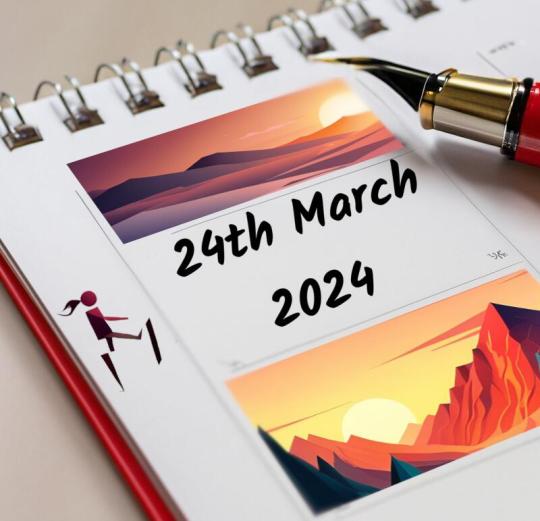
24th March 2023 🗓️ : Death - Pradeep Sarkar Pradeep Sarkar, Indian writer and director (b. 1955) "Pradeep Sarkar (30 April 1955 – 24 March 2023) was an Indian director and screenwriter, best known for directing Parineeta (2005)...."
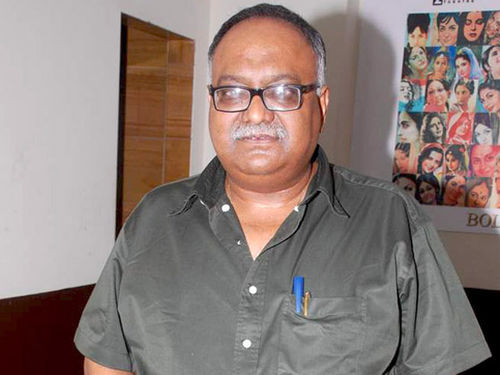
Image licensed under CC BY 3.0? by Bollywood Hungama
24th March 2019 🗓️ : Event - Jakarta MRT Jakarta MRT, a rapid transit system in Jakarta, began operation. "The Jakarta Mass Rapid Transit (Indonesian: Moda Raya Terpadu Jakarta) or Jakarta MRT (MRT Jakarta, stylized as mrt jakarta) is a rapid transit system in Jakarta, the capital city of Indonesia. The system is operated by PT Mass Rapid Transit Jakarta (Perseroda), a municipally owned perseroan..."

Image licensed under CC BY-SA 4.0? by Irfan Muhammad
24th March 2014 🗓️ : Death - Oleksandr Muzychko Oleksandr Muzychko, Ukrainian activist (b. 1962) "Oleksandr Ivanovych Muzychko (Ukrainian: Олександр Іванович Музичко; 19 September 1962 – 24 March 2014), nicknamed Sashko Bilyi (Сашко Білий, transl. Alex White), was a Ukrainian political activist, a member of UNA-UNSO and coordinator of Right Sector in Western Ukraine.Muzychko had vowed to fight..."
24th March 1974 🗓️ : Birth - Sergey Klyugin Sergey Klyugin, Russian high jumper "Sergey Petrovich Klyugin (Russian: Сергей Петрович Клюгин; born 24 March 1974 in Kineshma) is a Russian high jumper. He won the gold medal at the 2000 Summer Olympics with 2.35m, one centimetre behind his personal best jump from 1998. A bronze medal at 1998's European championships was his only..."
24th March 1924 🗓️ : Birth - Norman Fell Norman Fell, American actor (d. 1998) "Norman Fell (born Norman Noah Feld; March 24, 1924 – December 14, 1998) was an American actor of film and television, most famous for his role as landlord Mr. Roper on the sitcom Three's Company and its spin-off, The Ropers, and his film roles in Ocean's 11 (1960), The Graduate (1967), and Bullitt..."

Image by ABC Television
24th March 1824 🗓️ : Death - Louis Marie de La Révellière-Lépeaux Louis Marie de La Révellière-Lépeaux, French lawyer (b. 1753) "Louis Marie de La Révellière-Lépeaux (24 August 1753 – 24 March 1824) was a deputy to the National Convention during the French Revolution. He later served as a prominent leader of the French Directory. ..."
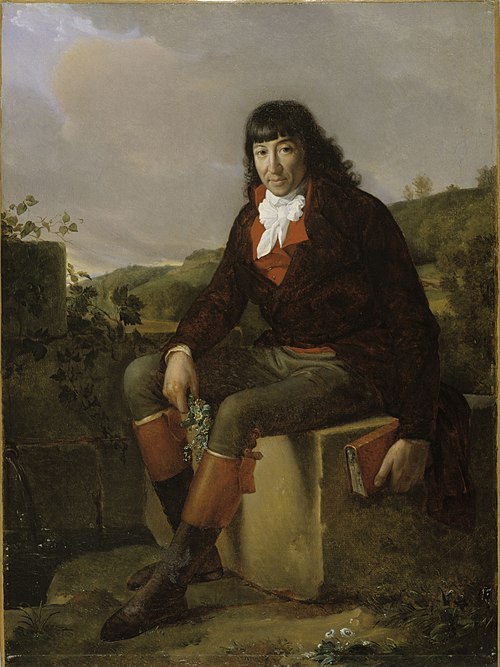
Image by Adélaïde Marie Pilastre / After François Gérard / Gerard van Spaendonck
24th March 🗓️ : Holiday - Day of Remembrance for Truth and Justice (Argentina) "The Day of Remembrance for Truth and Justice (Spanish: Día de la Memoria por la Verdad y la Justicia) is a public holiday in Argentina, commemorating the victims of the Dirty War. It is held on 24 March, the anniversary of the coup d'état of 1976 that brought the National Reorganization Process to..."
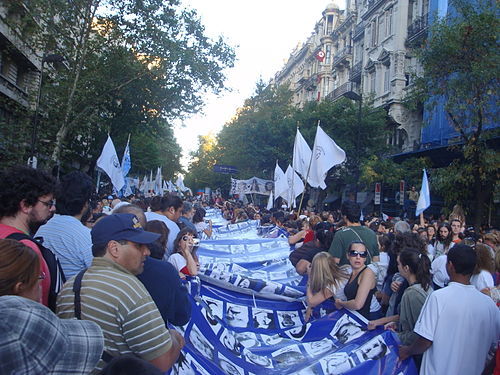
Image licensed under CC BY-SA 3.0? by Banfield
0 notes
Photo
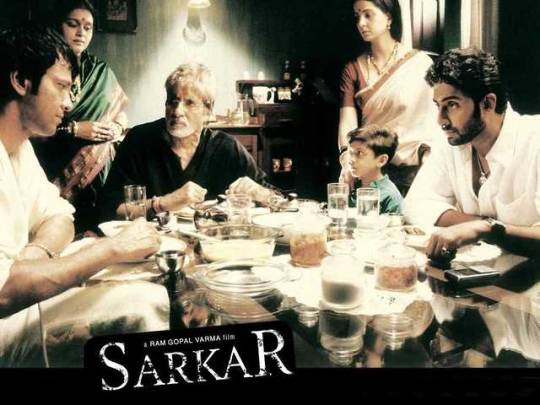
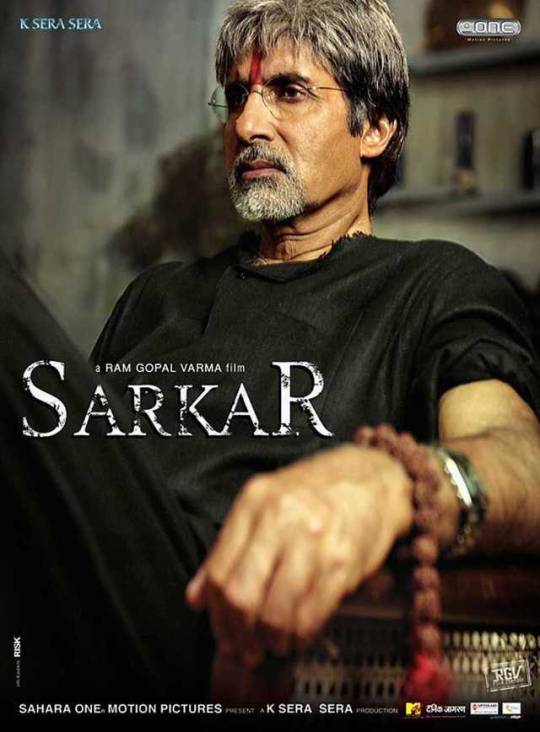
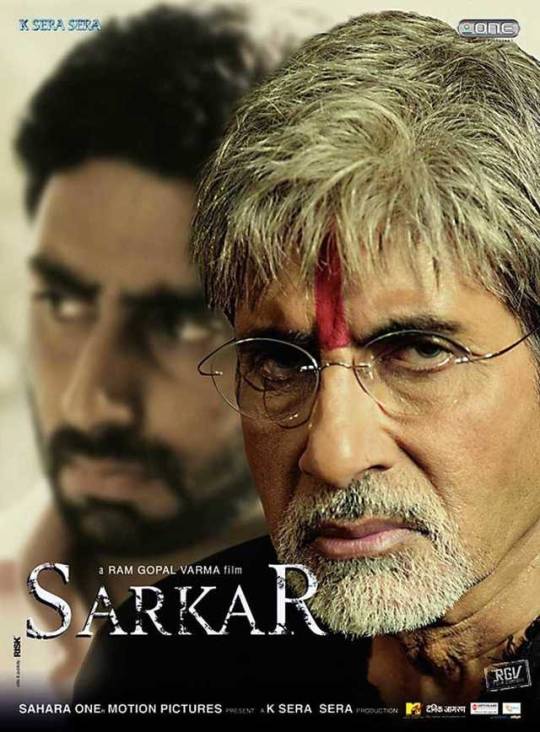
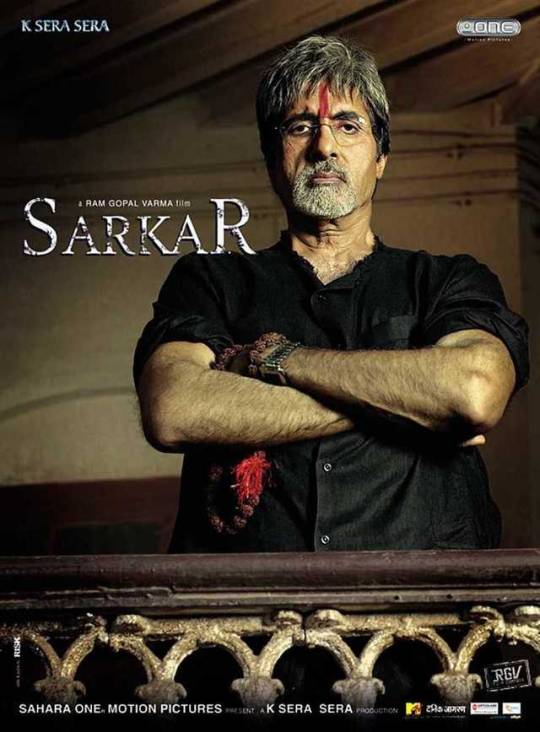
14 Years of Sarkar (01/07/2005) Sarkar is a political crime thriller film directed by Ram Gopal Varma. The film stars Amitabh Bachchan in the title role alongside Abhishek Bachchan as his younger son, along with Kay Kay Menon, Katrina Kaif, Anupam Kher, Kota Srinivasa Rao, Supriya Pathak, and Tanishaa Mukherji. It is the first installment of Sarkar film series. The film is inspired by The Godfather. Along with film's sequel, Sarkar Raj, released on 6 June 2008, the film was archived at the American Academy of Motion Pictures library. The blockbuster film was premièred at the New York Asian Film Festival. Sarkar was super hit at the box office and was greeted very well by critics. Critics liked the way the movie indigenized The Godfather and introduced a political angle to it. The actors, particularly the trio of Amitabh Bachchan, Abhishek Bachchan, and Kay Kay Menon, were lavished with praise for their controlled yet intense performances. Abhishek Bachchan, in particular, was rewarded for his portrayal as a son who is inexperienced but enters an unknown world so as to save his father.
#Sarkar (2005)#Amitabh Bachchan#ram gopal varma#abhishek bachchan#kay kay menon#katrina kaif#anupam kher#kota srinivasa rao#supriya pathak#tanishaa mukherji#bollywood#bollywoodirect
83 notes
·
View notes
Text
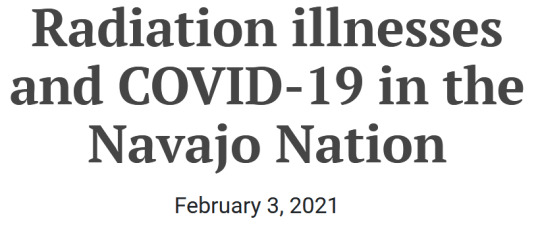

In Indigenous lands where nuclear weapons testing took place during the Cold War and the legacy of uranium mining persists, Indigenous people are suffering from a double whammy of long-term illnesses from radiation exposure and the C0VID-19 p@ndemic. Yet, we have not witnessed in the mainstream media and policy outlets a frank discussion of how the two public health crises have created an intractable situation for Indigenous communities. The Diné are drinking poisoned water, putting them at risk for more severe coronavirus infections.
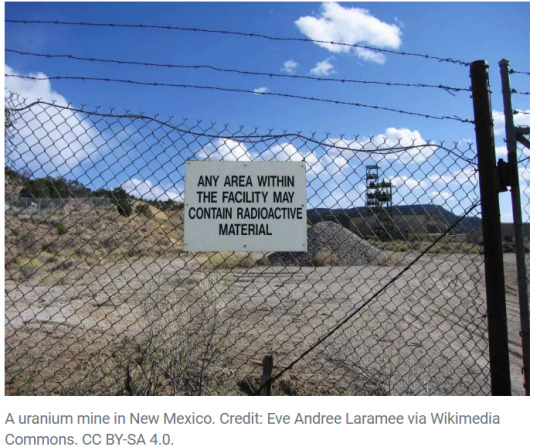
From 1944 until 1986, 30 million tons of uranium ore was extracted on Navajo lands. At present, there are more than 520 abandoned uranium mines, which for the Diné represents both their nuclear past as well as their radioactive present in the form of elevated levels of radiation in nearby homes and water sources. Due to over four decades of uranium mining that supplied the US government and industry for nuclear weapons and energy, radiation illnesses characterize everyday Diné life. [...]
The nonprofit Navajo Water Project says the Diné are 67 times more likely to be without running water or a toilet connected to sewer lines than others in the United States. As a result, many are forced to drive or even walk several miles to the nearest communal water station. Some instead get water from an unregulated source, like a livestock trough. But research shows uranium mining may have contaminated many wells on the reservation. A large portion of the area’s groundwater has been contaminated with uranium as well as other mining by-products like arsenic that were mobilized by the mining operations, according to researchers who presented their findings at a 2019 American Chemical Society conference. [...]
According to a 2019 report by the environmental groups U.S. Water Alliance and DigDeep about access to water, the number of cases for gastric cancers doubled in the 1990s in the Diné areas where uranium mining had taken place. [...]
In a study published last August in the Journal of Public Health Management and Practice, researchers found a relatively high percentage of households on Native American reservations lacked complete indoor plumbing. While only 0.4 percent of homes in the United States lacked indoor plumbing, on Indigenous reservations that number was 1.09 percent. For the Navajo Nation, it was 18 percent. [...]
-------
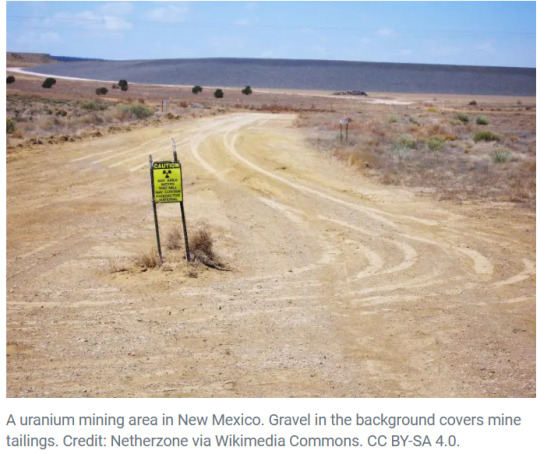
The Diné have paid a heavy toll during the pandemic.
According to the Navajo Times, there had been at least 27,887 reported positive cases of COVID-19 on the Navajo Nation by late January, including 989 deaths. [...]
-------
The Navajo Nation Council banned uranium mining under the Diné Natural Resources Protection Act of 2005, but much of the mining contamination remains. While the Environmental Protection Agency says that $1.7 billion has been secured through legal settlements with mining companies and other agreements dating back to at least 2014 for cleanup at 219 of the 523 abandoned uranium mines on the Navajo Nation, the Diné say little of the work has been completed. “The biggest thing is that out of the $1.7 billion dollars I think the total amount that has been spent as of today is $116 million on studies. … Out of the 219 that were funded, not one site is 100 percent ready to be cleaned up,” Navajo Council speaker Seth Damon said last year, according to the Navajo Times. The newspaper reported that the Environmental Protection Agency hopes to begin cleaning up the sites by 2024.
Indigenous organizations are doing a tremendous amount of work to address radiation poisoning and water scarcity in the Diné community. These include the Red Water Pond Road Community Association where activists like Terry Keyanna are fighting for environmental justice every day. The Navajo Water Project, a section of the larger non-profit DigDeep, is doing valuable work to address the lack of access to clean water in the Diné community. Since last March, Gavin Noyes and Woody Lee at Utah Diné Bikeyah have provided food and supplies to more than 800 homes, and delivered “175,000 gallons of new water storage capacity to over 600 families without water.” The Navajo and Hopi Families COVID-19 Relief Fund is another grassroots organization, started with a GoFundMe page created by former Navajo Nation Attorney General Ethel Branch that raises money for two weeks’ worth of food for Diné and Hopi families in self-quarantine. Their work is a pivotal lifeline in pandemic times.
-------
Headline, images, captions, and text published by: Jayita Sarkar and Caitlin Meyer. “Radiation illnesses and COVID-19 in the Navajo Nation.” Bulletin of the Atomic Scientists. 3 February 2021.
1K notes
·
View notes
Photo

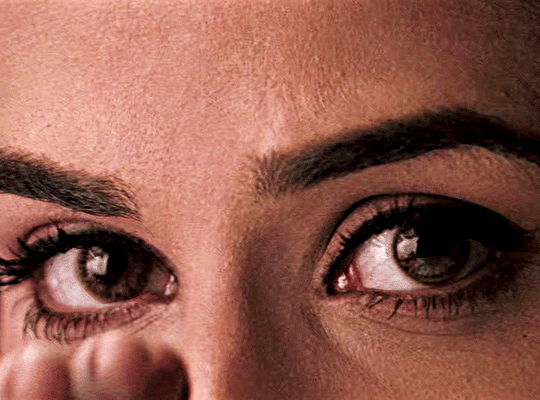
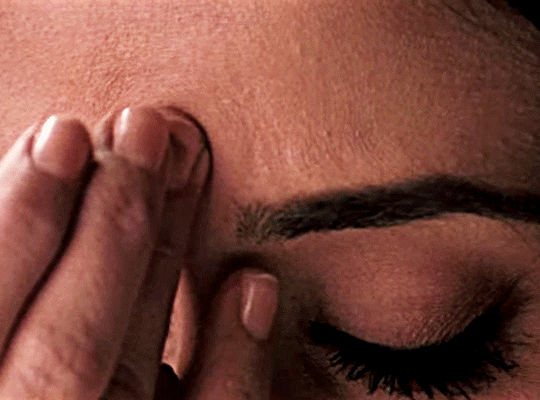

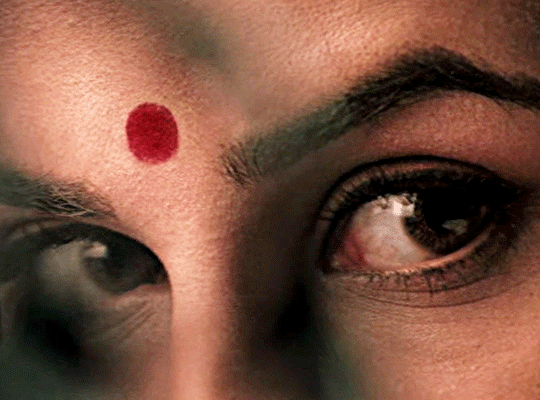
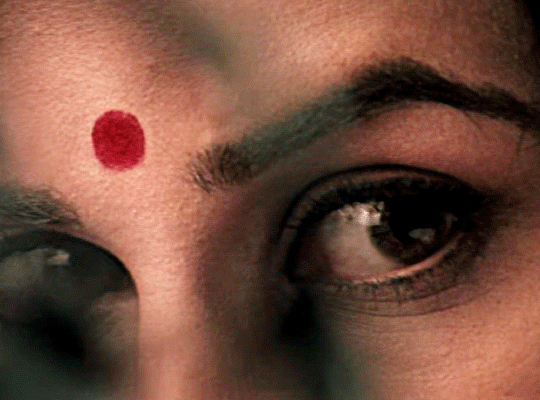
VIDYA BALAN as Lalita in Parineeta (2005) + Eyes ↳ dir. Pradeep Sarkar
#parineeta#vidya balan#bollywood#bollywood2#bollywoodedit#dailyworldcinema#worldcinemaedit#world cinema#indian cinema#ladiesblr#wocedit#dailywoc#pocedit#filmtv#tvfilmedit#tvandfilmgifs#dailytvandfilmgifs#filmgifs#desi#esagifs#s: netflix#mine#if looks could kill#you don't see such visuals in indian films these days
72 notes
·
View notes
Photo
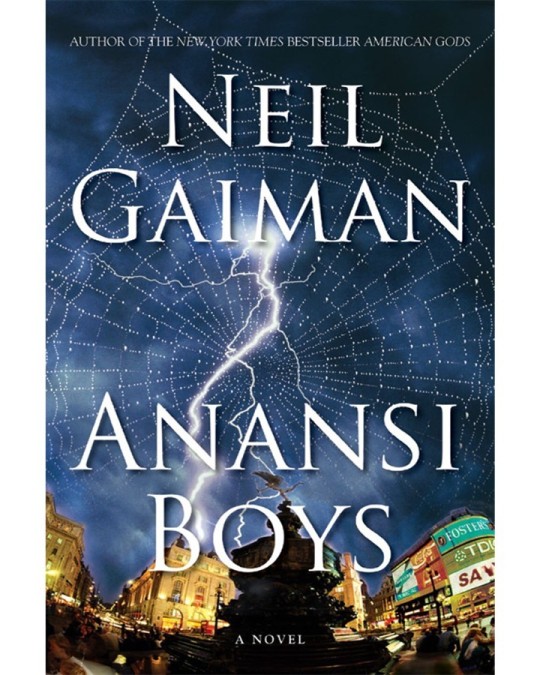
#AnansiBoys, written by #NeilGaiman (@neilhimself), first published #OnThisDay in 2005⠀⠀⠀⠀⠀⠀⠀⠀⠀ ⠀⠀⠀⠀⠀⠀⠀⠀⠀ #FirstEdition #CoverArt & Design by Richard Aquan & Shubhani Sarkar⠀⠀⠀⠀⠀⠀⠀⠀⠀ ⠀⠀⠀⠀⠀⠀⠀⠀⠀ #OTD #Books #BookCover #BookCoverArt #1stEdition https://www.instagram.com/p/CUDbXmUB2_5/?utm_medium=tumblr
3 notes
·
View notes
Video
2005 Khuda Aur Mohabbat - Season 3 Ep 16 /PK Drama Info
Khuda Aur Mohabbat - Season 3 Ep 16 /PK Drama Info Khuda Aur Mohabbat Digitally Presented by Happilac Paints Farhad and Mahi hail from completely different economic and cultural backgrounds. Mahi, who comes from an influential family, must adhere to the conventions and requirements of her family’s class despite her true jovial nature. Farhad on the other hand belongs to a small town and is instantly drawn to the charismatic Mahi and soon forsakes everything for her. Though Mahi appreciates Farhad’s efforts, she does not have the same feelings for him. In the quest to win Mahi’s heart, Farhad finds himself forming a special bond with his creator and becomes a devotee of love. In this classic love story two star-crossed souls struggle to fight for their love. Will destiny bring them together? Will the boundaries of class and society be broken? Or is Farhad destined to live the life of a devotee? Written by: Hashim Nadeem Khan Directed by: Syed Wajahat Hussain Produced by: Abdullah Kadwani & Asad Qureshi Production House: 7th Sky Entertainment Singer: Rahat Fateh Ali Khan & Nish Asher Lyrics: Qamar Nashad Composer: Naveed Nashad Cast : Iqra Aziz As Mahi Feroz Khan As Farhad Rubina Ashraf As Bari Sarkar Hina Bayat As Maa Ji Junaid Khan As Sikandar Mirza Zain Baig As Taimoor Usman Peerzada As Kazim Javed Shaikh As Nisar Seemi Pasha As Nisar’s Wife Asma Abbas As Farhad’s Mother Waseem Abbas As Taufeeq Ahmed Sunita Marshal As Sahiba Tooba Siddique As Romana Sohail Sameer As Nazim Meherbano As Rida Shameen Khan As Sajjal Momina Iqbal as Naheed #HappilacPaints #Colors0fHappiness #HappilacWipeout #PKDramaINfo #KhudaAurMohabbatEP16 #HARPALGEO #Entertainment
#Iqra Aziz As Mahi Feroz Khan As Farhad Rubina Ashraf As Bari Sarkar Hina Bayat As Maa Ji Junaid Khan As Sikandar Mirza Zain Baig As Taimoor#FunnyDramInfo#KhudaAurMohabbat#KhudaAurMohabbatLastEpisode
1 note
·
View note
Text
Shringasaurus indicus
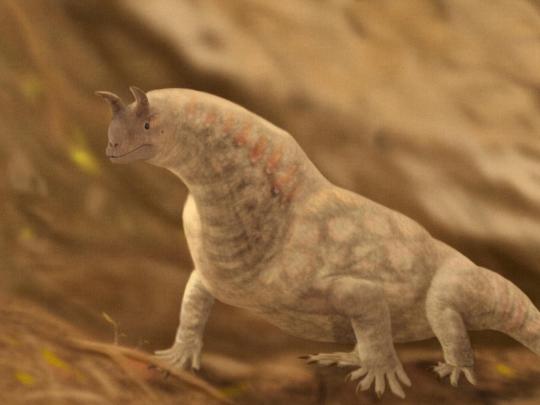
By Stolp
Etymology: Horned Reptile
First Described By: Sengupta, Ezcurra & Bandyopadhyay, 2017
Classification: Biota, Archaea, Proteoarchaeota, Asgardarchaeota, Eukaryota, Neokaryota, Scotokaryota Opimoda, Podiata, Amorphea, Obazoa, Opisthokonta, Holozoa, Filozoa, Choanozoa, Animalia, Eumetazoa, Parahoxozoa, Bilateria, Nephrozoa, Deuterostomia, Chordata, Olfactores, Vertebrata, Craniata, Gnathostomata, Eugnathostomata, Osteichthyes, Sarcopterygii, Rhipidistia, Tetrapodomorpha, Eotetrapodiformes, Elpistostegalia, Stegocephalia, Tetrapoda, Reptiliomorpha, Amniota, Sauropsida, Eureptilia, Romeriida, Diapsida, Neodiapsida, Sauria, Archosauromorpha, Crocopoda, Allokotosauria, Azendohsauridae
Status: Extinct
Time and Place: Between 247.2 to 242 million years ago, in the Anisian of the Middle Triassic
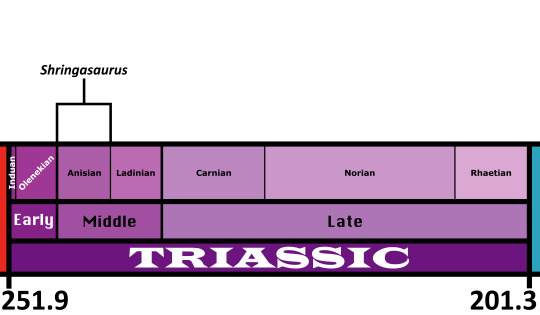
Shringasaurus is known from the Denwa Formation in Madhya Pradesh, India
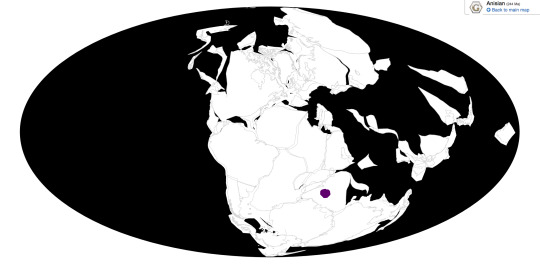
Physical Description: Shringasaurus is a very strange looking reptile (befitting of the allokotosaur title), and basically looks like one of those retro ‘slurpasaurs’ from those old dinosaur movies where they just glued horns onto an iguana. At around 3–4 metres long, Shringasaurus was pretty large for a Middle Triassic archosauromorph, and could have potentially stood tall enough to look you in the eye. Shringasaurus had some very unusual proportions, with a small blunt-snouted head on a long, very thick neck attached to some very deep shoulders with tall withers over them. These chunky forequarters contrast with its rear end, with proportionately small hips and a tail that is relatively short compared to other stem-archosaurs. Of course, its most famous features are its bizarre horns over its eyes. These are remarkably similar to the horns of ceratopsid dinosaurs like Triceratops, and are yet another fabulous example of the Triassic doing everything dinosaurs did first. These horns can be as tall as the skull again in large individuals, and curve to face up and forwards. These horns were proportionately smaller in younger animals, and so likely grew in as they matured. Interestingly, one juvenile specimen lacks horns at all, even though a similar sized specimen has them, suggesting that some Shringasaurus, possibly females, didn’t have them. Even on closer inspection Shringasaurus is weird. For instance, it has palatal teeth like some other reptiles, but lots of them, and they’re all shaped exactly like the teeth on the edges of its jaws. No other reptile besides it and its close relative Azendohsaurus have teeth like that. Just imagine how that would look when it opened its mouth.
Shringasaurus embodies the typical azendohsaurid body plan of combining bizarrely ‘advanced’ sauropod-like traits with those of more ‘primitive’ archosauromorphs. Its long neck and small head has obvious superficial similarities, but features of its jaws and teeth are so sauropod-like that they’re only seen in sauropods themselves and azendohsaurids like Shringasaurus—yet another remarkable example of convergent evolution in these animals. Features of its arms are similar to sauropodomorphs too, but its posture was decidedly more ‘primitive’ than them. Its back legs sprawled completely, like those of a lizard, and while the front legs weren’t anything as upright as sauropods, they may still have been held more off the ground in a sort of semi-sprawl than the back ones. This would have given Shringasaurus a sloped back and raised the head and neck higher above its shoulders, so in a way it was still superficially sauropod-like. With horns.
Diet: Shringasaurus was clearly a herbivore from the shape of its teeth, which are leaf-shaped and serrated (indistinguishable from herbivorous dinosaur teeth, infact). The teeth and jaws of its close relative of Azendohsaurus have been studied in detail, and suggest it preferred feeding on the softer parts of plants like leaves rather than tough stems and branches. Shringasaurus had similar teeth, so it likely fed on soft vegetation also. Quite how it used its freaky palatal teeth is anyone’s guess.
Behavior: Not much can be said for sure about its behaviour, but since so many Shringasaurus individuals were found together of different ages, it’s possible that they lived in mixed-aged herds. Sexual dimorphism, if really present, would be a good indicator that the horns were used at least for display, but like the horns of ceratopsids and living bovids it’s also possible they were used in combat, locking their horns in jousts to settle disputes over food, mates, territory, or anything else they might have been grumpy over. The shape of the horns in particular implies they were mostly likely used for this kind of wrestling.
Ecosystem: Shringasaurus co-existed with a decent variety of other typical mid-Triassic animals in the Denwa Formation. Other large herbivores included two dicynodonts, one a stahleckeriine and the other more like the older Kannemeyeria, as well as an early rhynchosaurid. No less than four temnospondyl amphibians are known from there, including the predatory Cherninia and Paracyclotosaurus crookshanki, a brachyopoid (think Koolasuchus), and a long-snouted gharial-like trematosaurid. The extinct lungfish Ceratodus was also swimming around here too. Shringasaurus was one of the largest animals known in this ecosystem, and probably would have only rubbed shoulders with the large stahleckeriine dicynodont for food sources, browsing on tall, lush plants out of reach of the other herbivores. The environment was a broad, semi-arid floodplain with slow meandering rivers, subject to seasonal rainfall and droughts that may have periodically dried up rivers and ponds.
Other: Shringasaurus belongs to a recently recognised group of archosauromorphs called Allokotosauria, the “strange reptiles”, which includes other peculiar stem-archosaurs like Trilophosaurus and bizarre Teraterpeton. Allokotosaurs all appear to be herbivores, and can be characterised by their strange teeth, but they’ve all got different types of them! Shringasaurus and other azendohsaurids all have jaws full of teeth (including the roof of the mouth) that look just like herbivorous dinosaur teeth. The resemblance is so uncanny that Azendohsaurus was considered to be a dinosaur for decades before the rest of its body was discovered. Trilophosaurids meanwhile have a characteristic beak, which in the unique case of Teraterpeton is so long and pointed that it vaguely resembles an anteater, and their teeth are cusped and interlocking for shearing leaves.
Early archosauromorphs used to be thought of as mostly carnivores and insectivores, while the role of large herbivores was dominated by the synapsid dicynodonts in the Early and Middle Triassic, with archosaurs like dinosaurs and aetosaurs, as well as the rhynchosaurs, only taking over in the Late Triassic. Allokotosaurs like Shringasaurus demonstrate that this was wrong, and that stem-archosaurs were just as capable of being derived herbivores capable of competing with synapsids in the Middle Triassic just as well as the later derived rhynchosaurs and archosaurs, including at large sizes as big as Shringasaurus. Intriguingly, there’s evidence to suggest that Azendohsaurus was endothermic to some degree, i.e. warm-blooded, and given their close relationship it’s probable that Shringasaurus was too. This would make azendohsaurids like Shringasaurus some of the earliest stem-archosaurs to have been warm-blooded!
~ By Scott Reid
Sources under the Cut
Bandyopadhyay, S. and Sengupta, D.P., 1999. Middle triassic vertebrates of India. Journal of African Earth Sciences, 29(1), pp.233-241
Cubo, J.; Jalil, N.-E. (2019). "Bone histology of Azendohsaurus laaroussii: Implications for the evolution of thermometabolism in Archosauromorpha". Paleobiology. 45 (2): 317–330
Ghosh, P., Sarkar, S. & Maulik, P. Sedimentology of a muddy alluvial deposit: Triassic Denwa Formation, India. Sedimentary Geology 191, 3–36 (2006)
Goswami, A.; Flynn, J.J.; Ranivoharimanana, L.; Wyss, A.R. (2005). "Dental microwear in Triassic amniotes: implications for paleoecology and masticatory mechanics". Journal of Vertebrate Paleontology. 25 (2): 320–329
Maulik, P. K., Chakraborty, C., Ghosh, P. & Rudra, D. Meso- and Macro-Scale architecture of a Triassic Fluvial Succession: Denwa Formation, Satpura Gondwana Basin, Madhya Pradesh. Journal Geological Society of India 56, 489–504 (2000)
Mukherjee, R.N. and Sengupta, D.P., 1998. New capitosaurid amphibians from the Triassic Denwa Formation of the Satpura Gondwana basin, central India. Alcheringa, 22(4), pp.317-327
Mukherjee, D., Sengupta, D.P. and Rakshit, N., 2019. New biological insights into the Middle Triassic capitosaurs from India as deduced from limb bone anatomy and histology. Papers in Palaeontology
Nesbitt, S.J;, Flynn, J.J.; Pritchard, A.C.; Parrish, M.J.; Ranivoharimanana, L.; Wyss, A.R. (2015). "Postcranial osteology of Azendohsaurus madagaskarensis (?Middle to Upper Triassic, Isalo Group, Madagascar) and its systematic position among stem archosaur reptiles". Bulletin of the American Museum of Natural History (398): 1–126
Robinson, P. L. 1970. The Indian Gondwana formations–a review. In First IUGS International Symposium on Gondwana Stratigraphy and Paleontology, 201–268
Sengupta, S.; Ezcurra, M.D.; Bandyopadhyay, S. (2017). "A new horned and long-necked herbivorous stem-archosaur from the Middle Triassic of India". Scientific Reports. 7: 8366
#Shringasaurus#Shringasaurus indicus#Reptile#Archosauromorph#Triassic#Triassic Madness#Triassic March Madness#Palaeoblr#Allokotosaur#Prehistoric Life#Paleontology#Prehistory
364 notes
·
View notes
Text
32 Underrated Female Actors of Bollywood
On December 2 of 2019, I posted my “32 Underrated Male Actors of Bollywood” list. In that post, I promised an underrated female actors list soon, and after two long months, I finally got to finishing it. The biggest reason why it took such a long time for me to put this up (apart from spending more time on my other posts) was that there was just way too many unnoticed talents to mention. Many of the women mentioned here don’t fit the typical mold of a Bollywood heroine, but possess such immense talent that it should be a crime to not notice them. So without any further ado, here are 32 underrated female actors of Bollywood. Keep in mind, I am willing to make add more as time passes on so please leave me some suggestions :)
1. RICH CHADHA

Notable performances : Oye Lucky! Lucky Oye! (2008), Goliyon Ki Raasleela Ram-Leela (2013), Fukrey (2013), Gangs of Wasseypur (2012), Masaan (2015), Section 375 (2019), Inside Edge (2017-)
2. SWARA BHASKAR

Notable performances : Tanu Weds Manu (2011), Nil Battey Sannata (2015), Anaarkali of Aarah (2017), Raanjhanaa (2013), Veere Di Wedding (2018)
3. TANVI AZMI
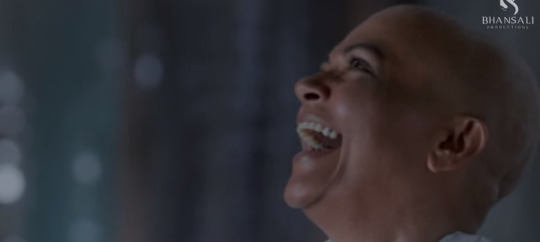
Notable performances : Bajirao Mastani (2015), Akele Hum Akele Tum (1995), Aarakshan (2011), Delhi-6 (2009), Yeh Jawani Hai Dewani (2013)
4. RASIKA DUGGAL
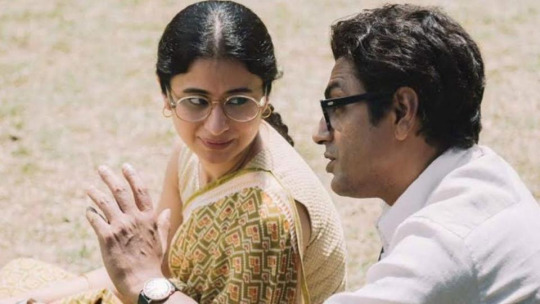
Notable performances : Manto (2018), Delhi Crime (2019-), Hamid (2018), Qissa (2013), Mirzapur (2018-)
5. TILLOTAMA SHOME
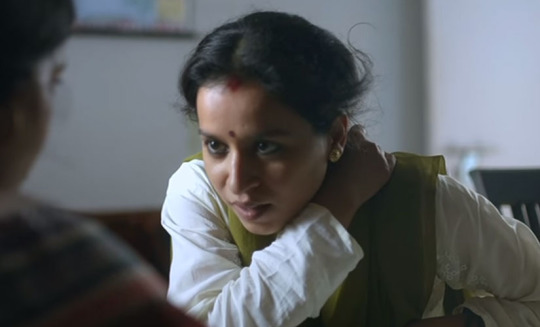
Notable performance : Qissa (2013), A Death in The Gunj (2016), Kadvi Hawa (2017), Hindi Medium (2017), Sir (2018)
6. RADHIKA APTE
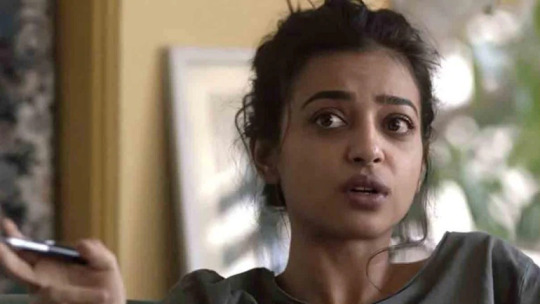
Notable performances : Parched (2015), Andhadhun (2018), Phobia (2016), Pad Man (2018), Lust Stories (2018), Badlapur (2015), Hunterrr (2015), Bazaar (2018)
7. SANDHYA MRIDUL
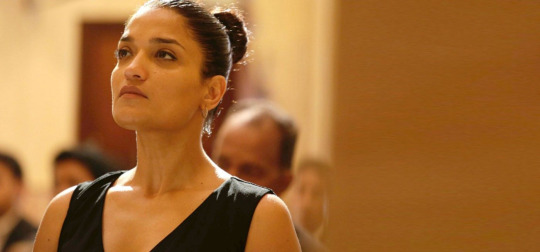
Notable performances : Page 3 (2005), Section 375 (2019), Angry Indian Goddesses (2015), The Great Indian Butterfly (2007)
8. DIVYA DUTTA

Notable performances : Badlapur (2015), Blackmail (2018), Bhaag Milkha Bhaag (2013), Delhi-6 (2009), Stanley Ka Dabba (2011), Veer-Zara (2004), Heroine (2012), Chalk n’ Duster (2016)
9. TISCA CHOPRA

Notable performances : Taare Zameen Par (2007), Qissa (2013), Rahasya (2015), Firaaq (2007), Bioscopewala (2017)
10. SUPRIYA PATHAK
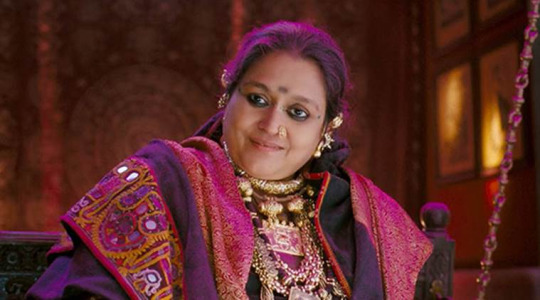
Notable performances : Goliyon Ki Rasleela Ram-Leela (2013), Khichdi (2002-2004), Bazaar (1982), Wake Up Sid (2009), Love Per Square Foot (2018)
11. KONKONA SEN SHARMA
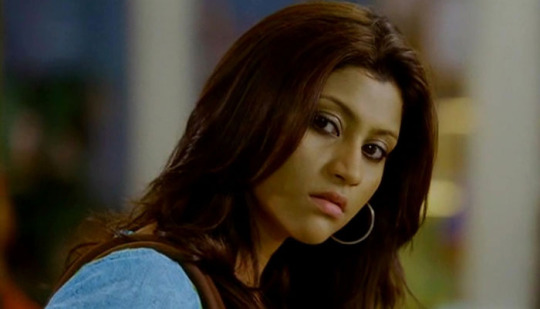
Notable performances : Wake Up Sid (2009), Page 3 (2005), Talvar (2015), Lipstick Under My Burkha (2016), 15 Park Avenue (2005), Luck By Chance (2009), Mr. and Mrs. Iyer (2002), Mirch (2010), Aaja Nachle (2007), Kadambari (2015), Atithi Tum Kab Jaoge? (2010)
12. NANDITA DAS

Notable performances : Fire (1996), 1947: Earth (1999), Provoked (2006), Ramchand Pakistani (2008), Pitaah (2002), Traces of Sandalwood (2014), Hari-Bhari: Fertility (2000)
13. SAYANI GUPTA
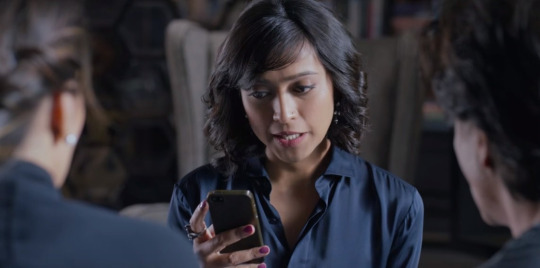
Notable performances : Article 15 (2019), Margarita With A Straw (2014), Jolly LLB 2 (2017), Parched (2015), Baar Baar Dekho (2016), Jagga Jasoos (2017), Fan (2016)
14. KIRTI KULHARI

Notable performances : Pink (2016), Bard of Blood (2019-), Blackmail (2018), Mission Mangal (2019), Uri: The Surgical Strike (2019), Indu Sarkar (2017), Shaitan (2011)
15. SOBHITA DHULIPALA

Notable performance : Raman Raghav 2.0 (2016), Made In Heaven (2019-), Bard of Blood (2019-), Ghost Stories (2019)
16. KUBBRA SAIT

Notable performances : Sacred Games (2018-), Jawani Jaaneman (2020)
17. TANNISHTHA CHATTERJEE

Notable performances : Angry Indian Goddesses (2015), Rough Book (2016), Brick Lane (2007), Parched (2015), Monsoon Shootout (2013), Watch Indian Circus (2011)
18. ANUPRIYA GOENKA
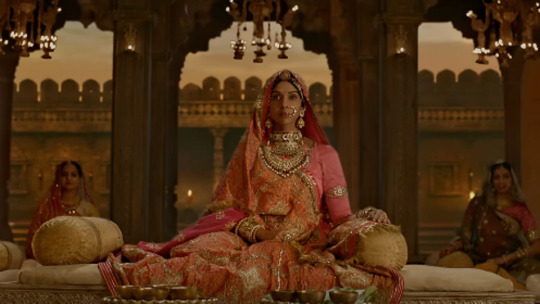
Notable performances : Criminal Justice (2019-), War (2019), Padmaavat (2018)
19. RATNA PATHAK SHAH

Notable performances : Lipstick Under My Burkha (2016), Sarabhai vs. Sarabhai (2004-2017), Kapoor & Sons (2016), Jaane Tu... Ya Jaane Na (2008), Golmaal 3 (2010), Nil Battey Sannata (2015), Love Per Square Foot (2018)
20. HUMA QURESHI

Notable performances : Gangs of Wasseypur (2012), Gangs of Wasseypur II (2014), Leila (2019), Badlapur (2015), Ek Thi Daayan (2013), Jolly LLB (2017), Dedh Ishqiya (2014)
21. CHITRANGDA SINGH

Notable performances : Inkaar (2013), Hazaaron Khwaishein Aisi (2003), Yeh Saali Zindagi (2011), Desi Boys (2011), Bazaar (2018)
22. SIMONE SINGH
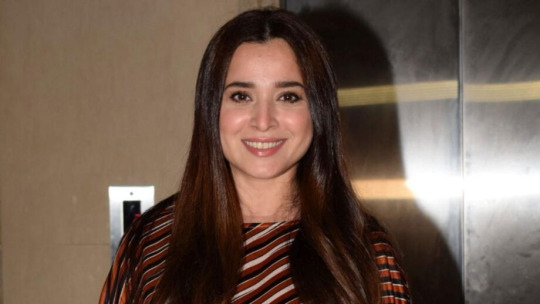
Notable performances : Kabhi Khushi Kabhi Gham (2001), Laal Kaptaan (2019), Being Cyrus (2005), Four More Shots Please! (2019-)
23. MAHIE GILL

Notable performances : Gulaal (2009), Saheb, Biwi Aur Gangster (2011), Dev. D (2009), Paan Singh Tomar (2010)
24. SHERNAZ PATEL

Notable performances : Guzaarish (2010), Rockstar (2011), Talaash (2012), John Day (2013), Janam (1985), The President Is Coming (2009), Black (2005)
25. SURVEEN CHAWLA

Notable performances : Ugly (2013), Parched (2015), Sacred Games (2018-)
26. RAJSHRI DESHPANDE
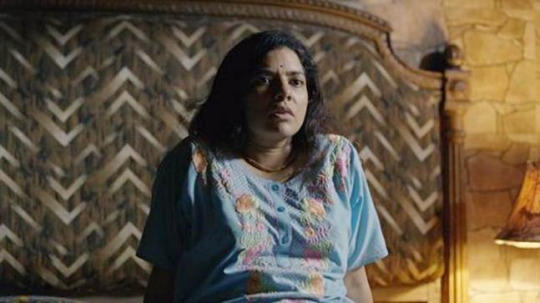
Notable performances : Sacred Games (2018-), Angry Indian Goddesses (2015), Manto (2018), Kanpuriye (2019)
27. NIMRAT KAUR

Notable performances : Airlift (2016), Homeland (2011-), The Lunchbox (2013), The test case (2017-2018), Yahaan... (2005)
28. SANYA MALHOTRA
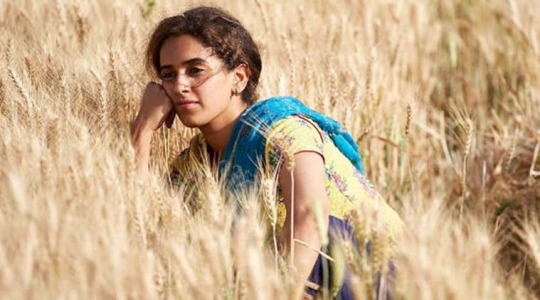
Notable performances : Photograph (2019), Badhaai Ho (2018), Pataakha (2018), Dangal (2016)
29. IRA DUBEY

Notable performances : Aisha (2010), Dear Zindagi (2016), The President Is Coming (2009), M Cream (2014), 30 Days in September (2017), Aisa Yeh Jahaan (2015)
30. KALKI KOECHLIN

Notable performances : Zindagi Na MIlegi Dobara (2011), Margarita With A Straw (2014), Yeh Jawani Hai Deewani (2013), Dev. D (2009), Shaitan (2010), Gully Boy (2019), That Girl in Yellow Boots (2010)
31. YASHASWINI DAYAMA

Notable performances : Dear Zindagi (2016), Delhi Crime (2019-), Phobia (2016), Made In Heaven (2019-)
32. LILLETE DUBEY

Notable performances : Kal Ho Na Ho (2003), Monsoon Wedding (2001), The Best Exotic Marigold Hotel (2011), The Second Best Marigold Hotel (2015), The Lunchbox (2013), Break Ke Baad (2010)
#film#film list#female actors#bollywood#bollywood movies#indie films#underrated#richa chadha#swara bhaskar#tanvi azmi#sandhya mridul#radhika apte#divya dutta#tisca chopra#supriya pathak#konkona sen sharma#nandita das#sayani gupta#sobhita dhulipala#kubbra sait#ratna pathak shah#huma qureshi#chitrangada singh#mahie gill#surveen chawla#nimrat kaur#sanya malhotra#kalki koechlin#lillete dubey
115 notes
·
View notes